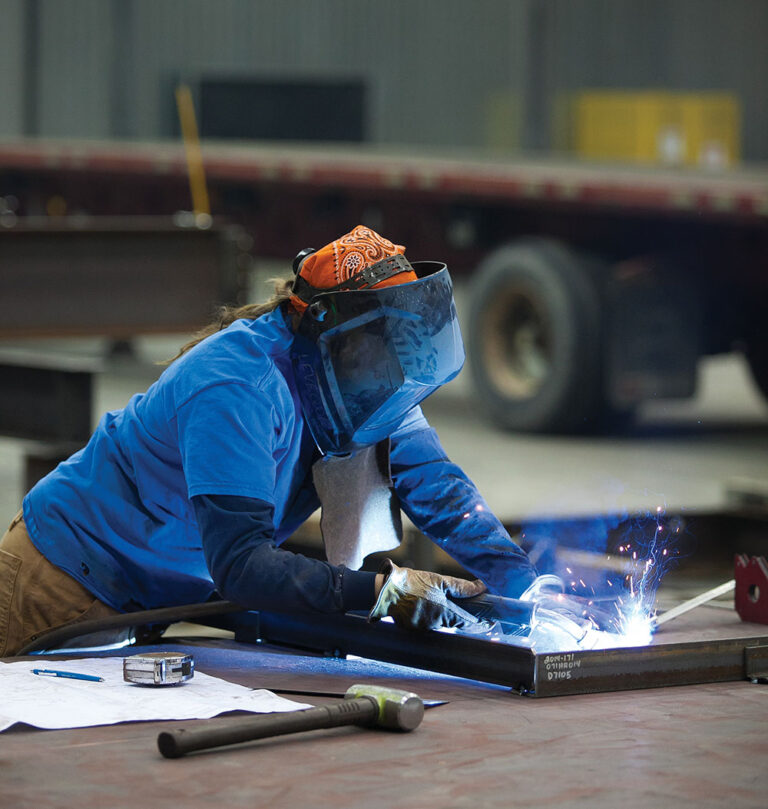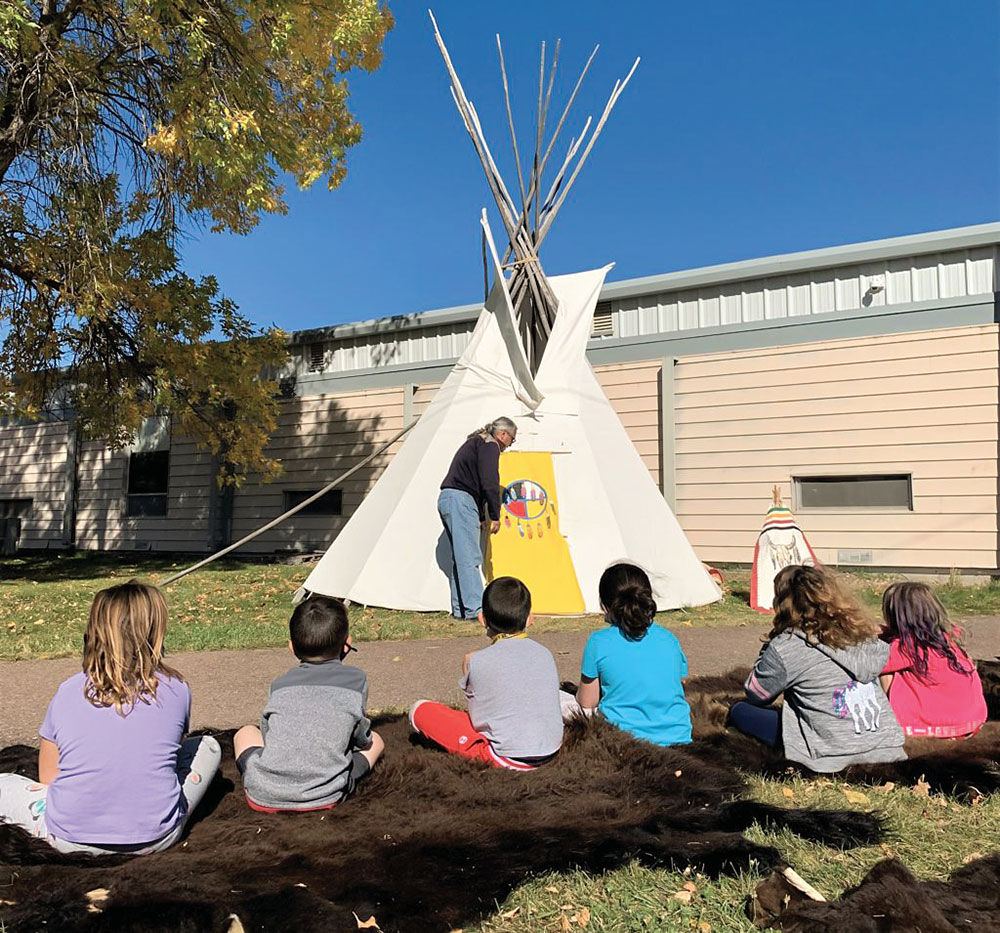Score an Excellent Education in Great Falls, MT
Great Falls Public Schools plays a pivotal role in preparing students for in-demand jobs in fields such as agriculture, health care and industrial technology.

Great Falls Public Schools plays a pivotal role in ensuring a steady pipeline of skilled and diverse talent is available for the region’s in-demand industries. An impressive roster of career and technical education courses, for example, helps prepare students for careers in such high-demand fields as agriculture, health care and industrial technology.
“In addition to focused coursework, the pathways include opportunities for job shadows and internships,” says Becky Nelson, community connections coordinator for Great Falls Public Schools.
Nelson says dual credit and stackable credential opportunities are provided to students to help them begin their workforce development journey as early as possible.
Teachers partner with local postsecondary institutions and community partners to delve deeper into the workforce needs within each specific pathway area, and high school counselors work closely with Department of Labor and Industry officials and industry leaders to educate students and parents about in-demand pathways.
Helping All Students Succeed
Native American and Hispanic students make up nearly a third of the student population, and the district’s diversity and inclusion efforts help ensure those students are supported and successful.
In This Article
Partnering with Schools in Great Falls
The school district partners with Malmstrom Air Force Base, for instance, to create a host of educational opportunities, including job shadowing and internships for junior and senior high school JROTC members, an internship program for students interested in careers in early child development and professional development programs for teachers.
Local service and business partners create close partnerships with students and parents to reach at-risk students, Nelson says, helping them stay in school and develop work-ready skills that are necessary to becoming productive citizens. The district also plays a role in producing a diverse workforce.

Diversity Matters
“Great Falls is home to people from a variety of backgrounds. We know that when a person feels safe and has a sense of belonging, he or she is more likely to be successful academically. It is paramount that we support a culture of inclusion in our schools,” Nelson says.
The nonprofit Great Falls Public Schools Foundation works with community organizations and private donors to fund innovative education programs as well as scholarships.
In 2022, the foundation received a $20,000 grant from Sisters United – a nonprofit that works to empower Indigenous women, children and communities – to fund projects, including raised garden beds with plants held sacred by Native American tribes, field trips to learn more about Native American history, a tribal elders lecture series and a plan to incorporate Native dance into physical education classes.
“Organizations like Sisters United are really committed to making sure that money is not a barrier for students who want to continue to grow academically.”
Stephanie Schnider, Great Falls Public Schools Foundation
“The grant also provides funding for scholarships for Native American students. [Sisters United] wanted to support students with their educational goals,” says Stephanie Schnider, executive director of the Great Falls Public Schools Foundation.
“Often, we don’t see Native American students pursuing post-secondary education to the same degree that their counterparts might. Organizations like Sisters United are really committed to making sure that money is not a barrier for students who want to continue to grow academically.”
Schnider says the support of private donors also allows the foundation and school district to help meet students’ basic needs so that they can thrive in the educational environment.
“The school district does a fantastic job of creating opportunities for (students) to explore career paths to grow in different fields that will help give them direction for moving forward in their professional lives or postsecondary education paths,” Schnider says. “That’s motivation for a lot of our donors who want to support students in their postsecondary plans – whether they be traditional or nontraditional.”
Developing Teachers in Great Falls
The Montana State University Northern Teachers of Promise Pathways was launched in 2022 to attract more prospective teachers to education careers in North Central Montana.
The initiative allows sophomore, junior and senior high school students to begin their education-focused courses through dual enrollment classes. Besides students earning dual-enrollment credits, Teachers of Promise Pathways offers financial and professional support for high schoolers interested in becoming Great Falls educators. MSU Northern has long been an advocate for training area students to become teachers.
The university also participates in a 2+2 program with Great Falls College that allows students to earn an associate degree at Great Falls College, then transfer into the MSU Northern education program.
Q&A: Superintendent of Cascade Schools
Serving some 300 students from the Ulm, Deep Creek, Cascade, Craig and Wolf Creek areas, the Cascade Public Schools district plays an important role in the workforce development efforts of rural Montana. Levi Collins, the district’s new superintendent, details the advantages the district offers students, their families and the business community.

Levi Collins
What role does the district play in the region’s workforce development efforts?
Our main goal is to try to prepare kids to be successful adults. We live in rural Montana, and we have a lot of ranchers and landowners who need students with a technical education and with trade skills. Right now, we’re really deep into our agricultural programs, which are merging with our technology programs. For example, one of our graduates is using drones to mark better GPS maps that help farmers determine the best time to spray fertilizer.
What advantages does the school district offer students and their families?
The relationships that students are able to develop with teachers are truly amazing. We’re a smaller district, so the student-to-teacher ratio is less than it is in bigger schools, and teachers really get to know their kids well, and they really become huge fans of the kids and try to tailor the kids’ education to that specific student. We can’t always offer quite as many courses, but to make up for that, we have a wide array of online courses that we offer.
What plans do you have for the school district now that you are at the helm?
One of the things that a lot of community members as well as some of the board members said they wanted to see was an uptick in some of our morale culture, and I feel like so far we’re achieving that. We’re making this an enjoyable place to be.
– Staff Writer Kevin Litwin contributed to this article.
Get to Know Great Falls
Want to learn more about living and working in Great Falls, MT? Check out the latest edition of Livability Great Falls, Montana.
